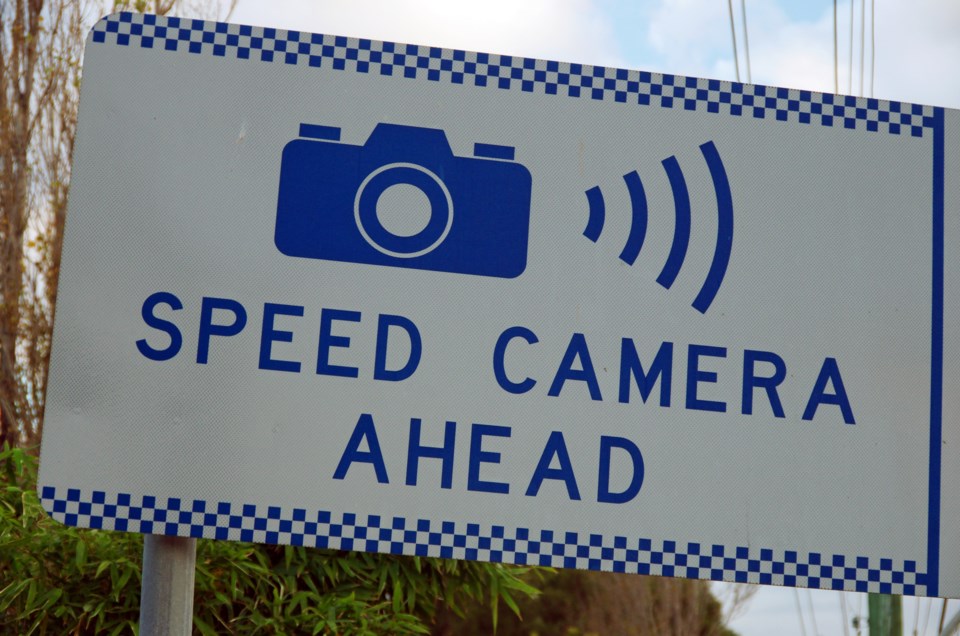The City of Toronto currently has 50 automated speed enforcement devices. In the months of June and July 2022, these cameras or sensors that pinpoint when a vehicle is speeding in order to issue tickets to the vehicle’s owner, were particularly busy.
Toronto revealed that 43,412 tickets originated from these devices in those two months. This represents an average of more than 700 traffic violations per day.
It is evident that not all motorists in Toronto are getting the message about following speed limits. In June and July, tickets were issued to 1,656 repeat offenders, including two vehicle owners who received 10 tickets each from the same automated speed enforcement device. Pizza flyers do not arrive to homes with the same frequency.
Since 2018, Research Co. and Glacier Media have asked British Columbians about automated speed enforcement. Our survey asks residents about four different ways in which technology can assist law enforcement authorities in issuing tickets to those who feel that existing speed limits do not apply to them.
This year, 72 per cent of British Columbians (up one point since 2021) told us they approve of the use of speed-on-green intersection cameras.
These are red light cameras that also capture vehicles that are speeding through intersections. The province currently possesses 35 red light cameras that have been converted into speed-on-green intersection devices. Speed-on-green intersection cameras are particularly popular among women (74 per cent) and British Columbians aged 55 and over (79 per cent).
We register an increase in the proportion of British Columbians who approve of the use of fixed speed cameras – devices that stay in one location and measure speed as a vehicle passes (76 per cent, up four points). Support for this type of automated speed enforcement reaches 78 per cent in Vancouver Island.
Mobile speed cameras, or devices that can be moved from place to place to measure speed as a vehicle passes, are supported by 66 per cent of British Columbians (up two points). Women are more likely to welcome this concept (70 per cent) than men (62 per cent).
As has been the case for the past few years, point-to-point enforcement is the most contentious idea. It entails the use of cameras at two or more distant points on a road. The average speed of vehicles that pass between points is calculated and tickets are issued to vehicles whose average speed over the distance was excessive. This year, 61 per cent of British Columbians (up eight points) are in favour of this method.
When the provincial BC New Democratic Party (NDP) government first contemplated an expansion of automated speed enforcement in 2019, some people may have been under the impression that this could become a political wedge issue. After all, one of the main promises of the remarkably successful BC Liberal campaign of 2001 was to get rid of what was referred to in the late 1990s and early 2000s as “photo-radar.”
Aside from a few overtures on social media from assumed sympathizers of the BC Liberals, there was no outcry over the proposal on the legislative assembly. The issue was not addressed in the 2020 provincial election campaign.
It is easy to see why. The positive perceptions of British Columbians on all four forms of automated speed enforcement are very similar among supporters of the province’s two major parties: fixed speed cameras (80 per cent among BC NDP voters, 76 among BC Liberal voters), mobile-speed cameras (71 per cent among BC Liberal voters, 69 per cent among BC NDP voters), speed-on-green cameras (77 per cent among BC NDP voters, 75 per cent among BC Liberal voters) and point-to-point enforcement (65 per cent among BC NDP voters, 64 per cent among BC Liberal voters).
Skepticism is slightly higher among BC Green Party supporters: agreement with all options ranges from 52 per cent to 69 per cent.
This year’s findings coincide with a larger appetite from residents to deal with speed in their communities, not just on busy intersections. In June, we learned that 66 per cent of British Columbians would “definitely” or “probably” like to see the speed limit reduced to 30 km/h on all residential streets in their municipality, while keeping the speed limit on arterial and collector roads at 50 km/h.
Most British Columbians have supported automated speed enforcement for years. In 2022, the most significant change is in the embrace of point-to-point enforcement. The speed-on-green concept, already implemented in specific parts of the province, remains a welcome addition for more than seven in 10 residents.
Mario Canseco is president of Research Co.
Results are based on an online study conducted from September 8 to September 10, 2022, among 800 adults in British Columbia. The data has been statistically weighted according to Canadian census figures for age, gender and region in British Columbia. The margin of error – which measures sample variability – is plus or minus 3.5 percentage points, 19 times out of 20.




